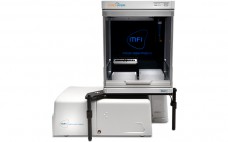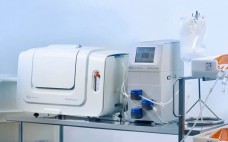Micro-Flow Imaging™ (MFI) easily detects particle size and morphology on a wide range of particle contaminants. And when you add the Bot 1 Autosampler to your MFI 5000 Series system, you’ve got the automated go-to method of choice for particle analysis today. Together, this combination lets you quickly screen for any changes in levels of particle contaminants like protein aggregates and silicone oil in your biopharmaceutical formulation. Highly concentrated protein solutions can be a little trickier to analyze with other…
BPI White Papers
Objective characterization of liposomal drug delivery platforms: Using cryoTEM and designated image analysis software
Quality-critical attributes particular to liposome drug products include physicochemical properties such as particle size distribution and morphology, e.g. their overall shape. Such properties will influence the biological activity and bio-distribution of liposomal-based drug and gene delivery platforms. Analytical techniques that provide objective and reliable information on liposome particle characteristics can thus help to improve product development processes and shorten the time to securing their final quality. Cryo-transmission electron microscopy (cryoTEM) combined with image analysis using proprietary Vironova Analyzing Software (VAS)…
Understanding Single-Pass Tangential Flow Filtration and the New Era of Bioprocessing
Learn how single-pass tangential flow filtration (SPTFF) technology is revolutionizing current and future bioprocessing platforms with its implementations in biotech, vaccine and plasma industries. Adopting SPTFF at process development (PD), pilot, clinical and commercial manufacturing scales has major advantages over conventional approaches. Key benefits include flexible manufacturing, reduced processing volumes, high product recoveries and increased yield, as well as major savings in capital expenditures. SPTFF also enables disposable and/or single-use technology utilization.
CHO Cell Cultivation in the Allegro™ XRS 20 Bioreactor System with Working Volumes from 2 to 25 L
The Allegro™ XRS 20 bioreactor system is a single-use bioreactor technology designed for applications ranging from general life sciences research to seed train operations, and as a final stage reactor for small scale commercial production. In practice, many installed systems have been implemented into seed train and small scale GMP production operations, where operational simplicity and consistent results are key benefits for industrial users. In the application note summarized here, we report efforts to enhance the capabilities of the…
Pall SoloHill® Animal Protein-Free Microcarriers for Dengue Virus Production
Pall Life Sciences offers a variety of regulatory-friendly animal protein-free (APF) SoloHill® microcarriers that can be quickly and easily optimized for use in vaccine production platforms. Our application note describes dengue virus production in Vero, optimizing cell culture seeding densities and microcarrier working concentrations for efficient cell attachment and growth in two different cell culture media platforms: a traditional serum supplemented formulation and a commercially available serum-free formulation (SFM). Overall, the results of this study demonstrates that Pall APF microcarriers…
Taking Advantage of High Capacity Protein A: An Economic Comparison of the Resin Cost Per Gram of Antibody Produced
With pressures mounting to reduce production costs at many companies, and protein A being the most expensive resin used in mAb purification, the use of a high capacity protein A resin can significantly impact the overall cost of doing business. This report details how using a high capacity protein A resin will reduce production costs, on a per-gram produced basis, for companies that implement its use in their chromatography platform.
Future Immunoassay Approaches in Modern Bioprocess Development
Modern bioprocess development requires accurate, high throughput analytical methods to match scaled-down, high-throughput screening, the application of DoE, and science-based decision making consistent with QbD. Gyrolab™ systems and Gyros’ immunoassay kits constitute a proven platform that supports these needs today and has the capability to meet future challenges. The assay principle uses high-capacity, flow-through affinity columns embedded within a CD. Centrifugal force, capillary action and hydrophobic barriers are exploited during parallel processing of up to 112 samples on each CD.…
Applying Single-Use Efficiencies to Room-to-Room Fluid Transfer
Biopharma manufacturers need to transfer critical fluids from cleanroom to cleanroom quickly, aseptically, and with minimal effort and expense for maximum productivity. Traditional hard piping involves intensive cleaning operations and down time between uses. Portable tanks run the risk of damage and leaks and also present cleaning challenges. Incorporating Single-Use components and practices with in-wall transfer systems can help speed and streamline operations while maintaining isolated environments. These types of systems help remove the risk of breakage, spillage and lost…
Robust, Load Independent Viral Clearance in Monoclonal Antibody Purification
Anion exchange chromatography is an important flow-through polishing step for viral clearance of monoclonal antibodies. Resin based materials are most commonly used for this but the large size of virus particles limits diffusion and binding capacity. It is therefore necessary to use large volumes of resin and oversized column hardware. Column chromatography as a unit operation also means high operational costs, including validation, cleaning and storage. This is a particular issue for clinical manufacturing, where a column is used for…
Development and Optimization of CHOgro® Transient Expression Technologies for High Titer Antibody Production in Suspension CHO Cells
During early stage drug development, quickly obtaining relevant candidate proteins through transient transfection can accelerate drug discovery. High titers are often obtained from Human Embryonic Kidney (HEK) 293 derived cell types; however, the use of different host cells between early stage transient and later stable protein production is a concern and can lead to the advancement of false-positive candidates. Chinese hamster ovary (CHO) cells are a desirable target cell type due to growth characteristics and a history of regulatory approval;…









